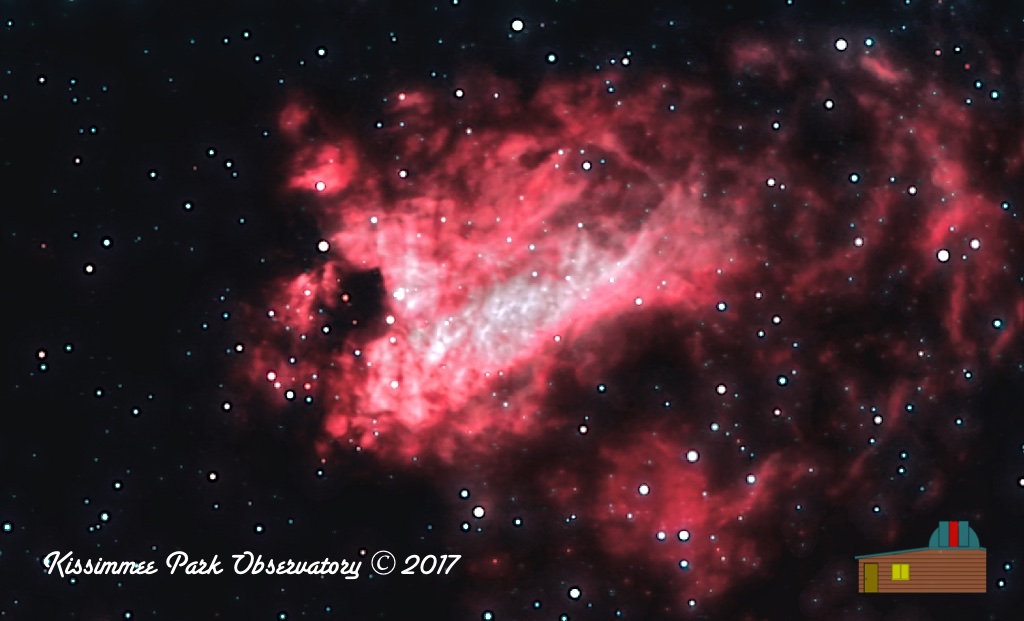The Omega Nebula is between 5,000 and 6,000 light-years from Earth and it spans some 15 light-years in diameter. The cloud of interstellar matter of which this nebula is a part is roughly 40 light-years in diameter. It is considered one of the brightest and most massive star-forming regions of our galaxy. Its local geometry is similar to the Orion Nebula except that it is viewed edge-on rather than face-on.
Image Info:
Canon 60D with an Astronomik CLS LPR Filter, at the prime focus of the KPO 18″ Reflector. 38 subframes of 120 seconds, each at ISO 1600, for a total integration time of 76 minutes. Captured and stacked in nebulosity, processed in StarTools, and finished in Aperture.
Click on the image for a larger version.

